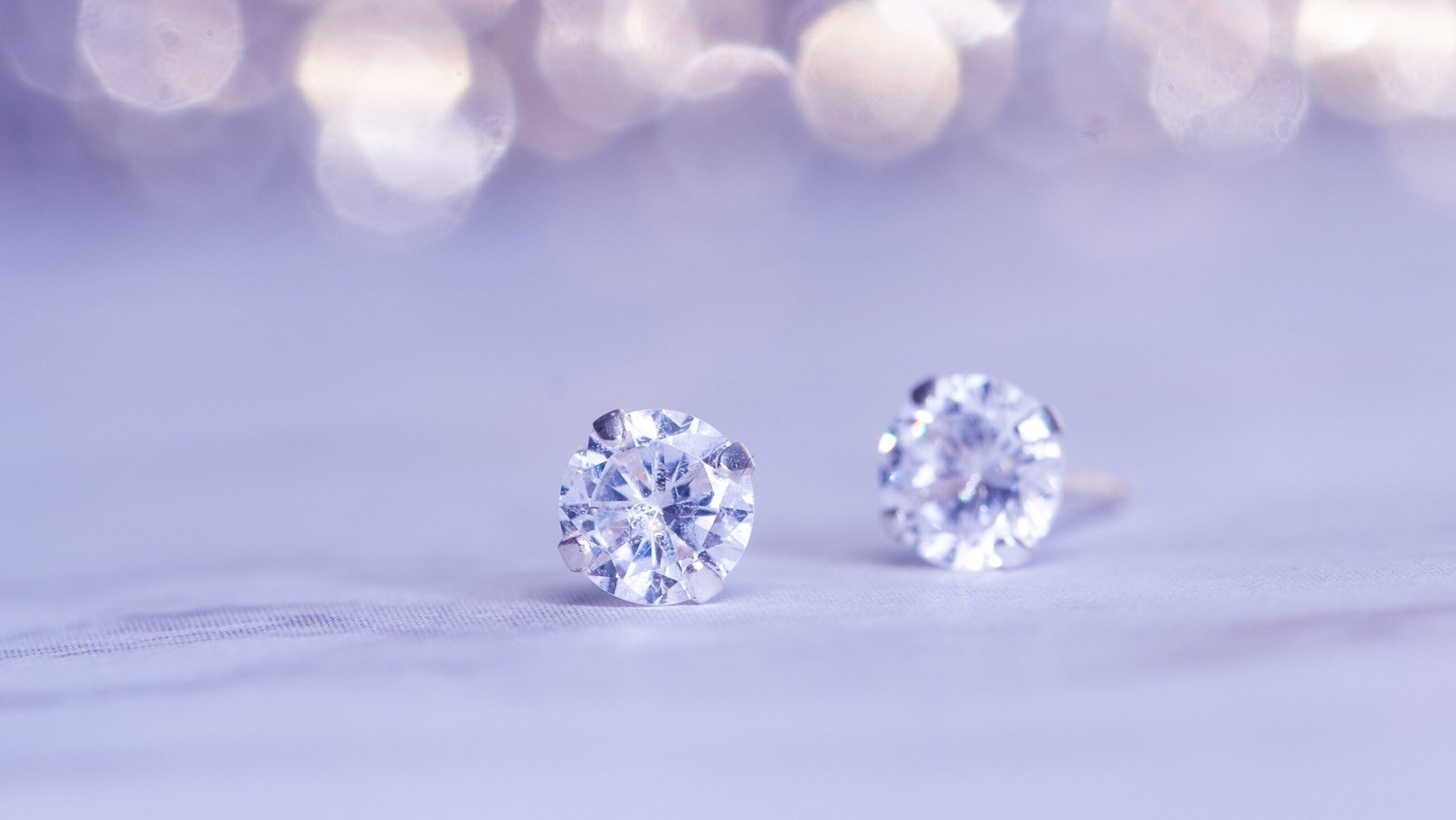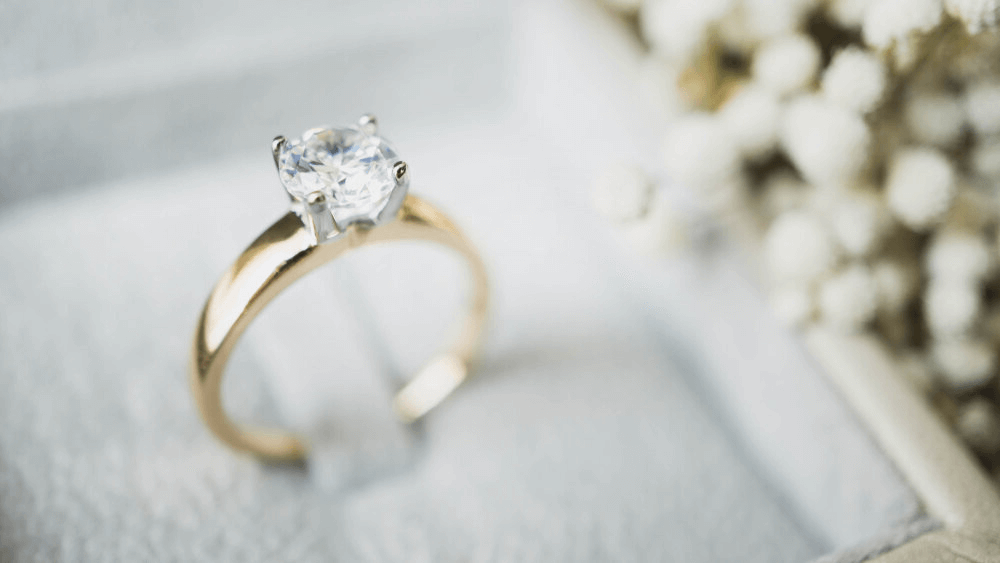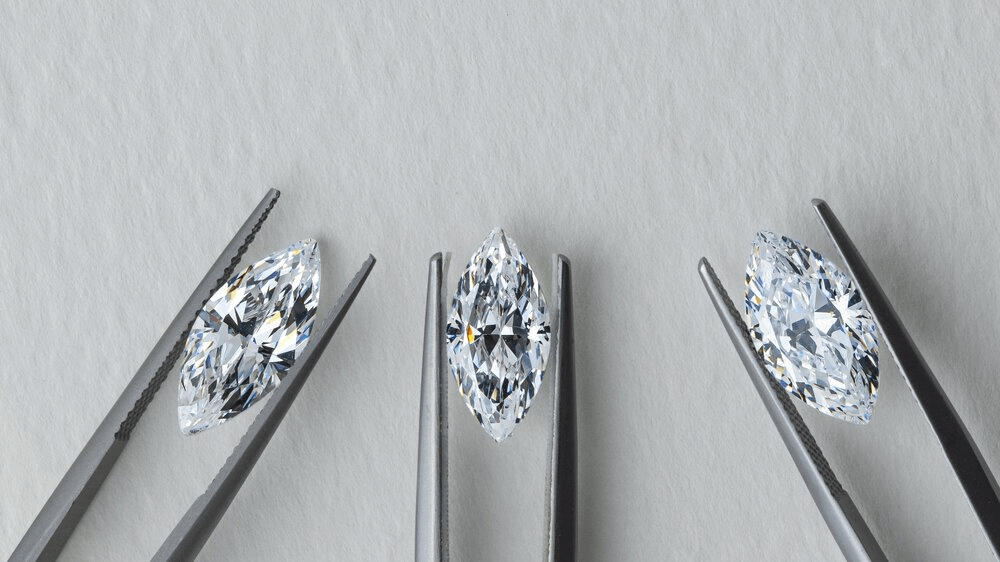Why Diamonds Shine: The Hidden Truth

By Gary A.

Edited by Olivia H.
Published Mar 26, 2022
Edited on Mar 31, 2025
Understanding why diamonds shine and sparkle is key to knowing how to buy the perfect engagement ring, ensuring that you select a diamond that truly dazzles from every angle.

Navigate This Guide:
- 7 Quick Tips for Evaluating Diamond Engagement Rings
- Introduction
- The Science of Sparkle: Why Diamonds Captivate
- The 4Cs and Sparkle: A Buyer’s Guide
- Lighting and Environment: Viewing Diamonds Right
- Our Expert Take
- 7 FAQs
Before we dive deeper into the specifics, here are some practical tips to help guide your decision-making process:
7 Quick Tips for Evaluating Diamond Engagement Rings:
Unveiling the Sparkle and Shine When selecting a diamond engagement ring, understanding why diamonds shine and sparkle brightly is crucial. This understanding not only enhances your appreciation of these precious stones but also guides you in making an informed purchase. Below are key tips to consider when examining the cut and overall brilliance of diamonds.
- Tip 1:Examine the Cut Quality: The cut of a diamond significantly impacts its ability to shine and sparkle. A well-cut diamond will have better light performance, leading to more brilliance (white light reflections) and fire (colorful light dispersion). Look for cuts with a high symmetry rating, as they reflect light more uniformly.
- Tip 2:Check for the Right Proportions: Proportions in a diamond cut affect its light reflection and dispersion. Ensure the diamond is neither too deep nor too shallow. Ideal or excellent proportions allow light to travel and exit through the top, maximizing the diamond’s shine.
- Tip 3:Understand the Facet Pattern: Facets are the flat surfaces on a diamond that reflect light. The arrangement and size of these facets play a crucial role in light performance. A classic round brilliant cut, known for its 57 or 58 facets, typically offers the most sparkle due to its symmetrical facet pattern.
- Tip 4:Consider the Diamond’s Shape: Different diamond shapes have varying levels of natural sparkle. Round diamonds are known for their superior brilliance, while other shapes like oval, pear, or marquise also offer impressive sparkle but in different patterns. Shapes like emerald or Asscher may have less sparkle but offer a unique, elegant look.
- Tip 5:Assess the Clarity and Color: While clarity and color primarily affect a diamond’s appearance, they can also influence its sparkle. A diamond with fewer inclusions (clarity) and a color closer to colorless will typically reflect light better, resulting in more sparkle.
- Tip 6:Inspect in Different Lighting Conditions: Diamonds can display varying levels of sparkle under different lighting. Inspect the diamond in multiple lighting environments, including natural daylight and indoor lighting, to get a true sense of its brilliance and fire.
- Tip 7:Pay Attention to the Polish: The polish of a diamond affects how light interacts with its surface. A well-polished diamond will have a smoother surface, allowing for better light reflection and, consequently, more shine.
Now that you’ve got these practical tips, use Jeweler AI below to find the perfect engagement ring that suits your style and budget:
Introduction
Diamonds have a high refractive index and, when cut to a high standard, are able to create mesmerizing light performances unlike any other gemstone. This is why Cut, one of the Four Cs, is so important to get right.
Looking at a rough diamond just mined from the earth or gathered from a murky deposit in a riverbed, you could be forgiven for seeing little to no potential in it. As their name alone suggests, they’re nothing like the symmetrical, glossy, brilliant gemstones we’re used to seeing in jewelry store. Instead, they are a lot like any other rock – irregular, dusty, and coarse – save for one thing: a slight hint of a much greater potential.
In many cases, you only need to take a closer look, and that potential starts jumping out at you. For instance, the octahedron shape resembles two pyramids placed base-to-base, and it only needs to be split down the middle for the basic shape of the Princess cut, one of the most popular cuts in the diamond world, to begin to appear.
The as-of-yet uncut Sethunya diamond, now housed in the Maison of Louis Vuitton, promises near-impeccable quality and, of course, incredible size and value (the stone currently weighs 549 carats – just under 110 grams. To the uninitiated, however, it could be confused with a lump of sea glass or quartz.
Some of the most prized features of any diamond – color, clarity, and size – are there to see from the very beginning, aside from one: the stones’ characteristic shine and sparkle, which must be brought out by the expert hands they fall into after they are taken from the earth.
The Science of Sparkle: Why Diamonds Captivate
The sparks of light that travel across the surface of any diamond are known as fire and brilliance, and refer to the colored and white sparks respectively.These are two phrases worth memorizing as you get closer to investing in a diamond of your own.
Refractive Magic: The Light-Bending Phenomenon
Some diamonds produce more fire than brilliance, like the Cushion cut, while others create the opposite effect. Some cuts, like the Emerald and Asscher, produce a lot less of either as a result of longer, larger facets – although, as you’ll see for yourself if you’re interested in these shapes, they still produce distinctive patterns of white and colored light.
When it comes to light performance, there are clear differences between diamond and any other gemstone. For instance, while common simulants like moissanite and cubic zirconia can do an okay job of resembling diamond in photographs, their different light performances are quick to betray them.
The 4Cs and Sparkle: A Buyer’s Guide
The Cut Factor: Engineering Brilliance
After the diamond has been cut into shape, it is polished on a special wheel until every facet is smooth, and free from any rough texture. This glassy finish means that the diamond will shine under a light source – something you can see most clearly in step cut diamonds, like the Emerald and Asscher – but, in most shapes, will be overwhelmed by the intense sparkle created as the light source roams over their many facets.
But, why does cutting a diamond increase the sparkle? Because creating those facets creates a pathway that light follows through the diamond, and back out. The facets are strategically mapped out before a single cut is made, in order to create the best possible light performance for that particular stone.
You can find out more about the sparkliest diamond cuts here.
Clarity and Color: Visibility of Sparkle
Both clarity and color have very little impact on a diamond’s sparkle. Even a yellow diamond will create plenty of fire and brilliance – that is, provided the cut is good and there aren’t any major, cloudy inclusions.
Clarity has more of an impact on sparkle than color, but only if the diamond is significantly (and visibly) included. Eye clean diamonds will sparkle as much as their cut quality allows, and only cloudy and heavily included diamonds will be incapable of drawing in, refracting, and emitting enough light to create a good sparkle. Even salt and pepper diamonds sparkle.
Carat Weight and Sparkle Perception
Bigger diamonds appear to sparkle more. Why? Because they draw in more light and, as a result, emit more light. They have a larger surface area, which means a stronger light performance across the crown and table.
Of course, it’s all relative. A smaller diamond won’t appear dim and dull alongside a bigger diamond. If the cut is strong, then both diamonds will sparkle in a way that seems right for their size.

Lighting and Environment: Viewing Diamonds Right
Different light sources will interact differently with the same diamond. Think about how your skin looks different in the bathroom vs the bedroom vs the grocery store.
Natural lighting is perfect for viewing a diamond. Since you can’t recreate lab conditions at home, focus on the light sources the ring will be exposed to most commonly. So, your lighting at home, outside, and the dimmer lighting you get in restaurants. Each source will create plenty of fire and brilliance, but remember that how your diamond looks in one room of the house won’t be how it looks in another.
Why Some Diamonds Don’t Sparkle
A poor cut is often to blame, but a particularly large cloud inclusion, or strong fluorescence can all cause a diamond to appear dull, lifeless, and lacking in sparkle.
It’s a sad fact that, even with the best cutting techniques, some diamonds simply won’t live up to our expectations. A cloudy appearance is not something that can be fixed, or even improved upon, and that is just one of the many reasons why no one should ever feel comfortable investing in a diamond through the internet.
Our Expert Take
Diamonds shine because of a combination of their innate characteristics, and the work of the diamond cutter. A diamond’s unique refractive index means that generating a high shine is part of its nature, and a cutter’s ability to direct light through the diamond via its facets, are what create that unrivalled display of fire and brilliance.
Keep in mind that some shapes sparkle more than others, and that you should never feel comfortable going to a diamond with a GIA cut grade below Very Good. Diamond proportion is also incredibly important, so understanding how to assess prospective diamonds for strong ratios is essential, or you could wind up disappointed.
Knowing the facts is important. However, buying diamonds from vendors you can trust is essential. Devouring and understanding reports and pouring over images is only good insofar as what you’re looking at is the real thing. At WillYou.com, our sorting process, carried out by experts, ensures that the diamonds we sell are high quality, and that our partners, A.Jaffe, will be able to make it sing in its setting.
7 FAQs
- Q: Why Do Diamonds Sparkle?
- A: Diamonds shine and sparkle due to their unique ability to refract and disperse light. This is primarily influenced by the diamond’s cut, which, if done expertly, allows light to enter, reflect internally, and exit in a way that maximizes the diamond’s brilliance and fire.
- Q: What Diamond Cut Sparkles the Most?
- A: The Round Brilliant Cut is known to sparkle the most. Its precise cut with 57 or 58 facets is engineered to optimize light reflection, resulting in unmatched brilliance and fire.
- Q: Do All Diamonds Sparkle the Same?
- A: No, diamonds do not all sparkle the same. The level and quality of sparkle depend on several factors, including the cut, clarity, color, and the diamond’s shape. The cut quality is the most critical factor in determining a diamond’s sparkle.
- Q: Can the Setting Affect a Diamond’s Sparkle?
- A: Yes, the setting can significantly affect a diamond’s sparkle. Settings that allow maximum light exposure, like prong settings, tend to enhance sparkle, while bezel settings might restrict the amount of light entering the diamond, thus reducing sparkle.
- Q: How Can I Tell if a Diamond Has Good Sparkle?
- A: Observe the diamond under different lighting conditions. A diamond with good sparkle should exhibit high brilliance (white light reflection) and fire (color dispersion). The diamond should also have a balanced cut with proper proportions.
- Q: Does the Color of a Diamond Affect Its Sparkle?
- A: While the color primarily affects the diamond’s appearance, it can indirectly influence sparkle. Diamonds with a color grade closer to colorless can reflect light more efficiently, potentially enhancing their sparkle.
- Q: How Important is Clarity for a Diamond’s Sparkle?
- A: Clarity is important, but it’s not the most crucial factor for sparkle. Minor inclusions can sometimes go unnoticed in terms of sparkle, especially if the diamond is well-cut. However, significant inclusions or cloudiness can diminish a diamond’s ability to reflect light effectively.
Find breathtakingly brilliant diamonds with the help of Jeweler AI – embark on a journey where every sparkle tells its own unique story.
FOLLOW-UP GUIDE SERIES












